1.
Introduction
Fractional differential equation theory comes with fractional calculus and is an abstract form of many engineering and physical problems. It has been widely used in system control, system identification, grey system theory, fractal and porous media dispersion, electrolytic chemistry, semiconductor physics, condensed matter physics, viscoelastic systems, biological mathematics, statistics, diffusion and transport theory, chaos and turbulence and non-newtonian fluid mechanics. Fractional differential equation theory has attracted the attention of the mathematics and natural science circles at home and abroad, and has made a series of research results. It has become one of the international hot research directions and has very important theoretical significance and application value.
As an important research area of fractional differential equation, boundary value problems have attracted a great deal of attention in the last ten years, especially in terms of the existence of positive solutions, and have achieved a lot of results (see [1,2,3,4,5,6,7,8,9,10,11,12,13,14,15,16,17,18,19,20]). When the nonlinear term changes sign, the research on the existence of positive solutions progresses slowly, and relevant research results are not many (see [21,22,23,24,25,26,27,28,29,30,31,32,33]).
In [21], using a fixed point theorem in a cone, Agarwal et al. obtained the existence of positive solutions for the Sturm-Liouville boundary value problem
where λ>0 is a parameter, p(t)∈C((0,1),[0,∞)), αi,βi≥0 for i=1,2 and α1α2+α1β2+α2β1>0; f∈C((0,1)×[0,∞),R) and f≥−M, for M>0,∀t∈[0,1],u≥0 (M is a constant).
In [22], Weigao Ge and Jingli Ren studied the Sturm-Liouville boundary value problem
where a(t)≥0 and λ>0 is a parameter. They removed the restriction f≥−M, using Krasnosel'skii theorem, obtained some new existence theorems for the Sturm-Liouville boundary value problem.
In [23], Weigao Ge and Chunyan Xue studied the same Sturm-Liouville boundary value problem again. Without the restriction that f is bounded below, by the excision principle and area addition principle of degree, they obtained three theorems and extended the Krasnosel'skii's compression-expansion theorem in cones.
In [25], Yongqing Wang et al. considered the nonlinear fractional differential equation boundary value problem with changing sign nonlinearity
where 2<α≤3, λ>0 is a parameter, Dα0+ is the standard Riemann-Liouville fractional derivative. f is allowed to change sign and may be singular at t=0,1 and −r(t)≤f≤z(t)g(x) for some given nonnegative functions r,z,g. By using Guo-Krasnosel'skii fixed point theorem, the authors obtained the existence of positive solutions.
In [28], J. Henderson and R. Luca studied the existence of positive solutions for a nonlinear Riemann-Liouville fractional differential equation with a sign-changing nonlinearity
where λ is a positive parameter, α∈(n−1,n],n∈N,n≥3,ξi∈R for all i=1,...m,(m∈N),0<ξ1<ξ2<⋯<ξm<1,p,q∈R,p∈[1,n−2],q∈[0,p], Dα0+ is the standard Riemann-Liouville fractional derivative. With the restriction that f may be singular at t=0,1 and −r(t)≤f≤z(t)g(t,x) for some given nonnegative functions r,z,g, applying Guo-Krasnosel'skii fixed point theorem, the existences of positive solutions are obtained.
In [31], Liu and Zhang studied the existence of positive solutions to the boundary value problem for a high order fractional differential equation with delay and singularities including changing sign nonlinearity
where n−1<α≤n,n=[α]+1,Dα0+ is the standard Riemann-Liouville fractional derivative. The restriction on the nonlinearity f is as follows: there exists a nonnegative function ρ∈C(0,1)∩L(0,1), ρ(t)≢0, such that f(t,x)≥−ρ(t) and φ2(t)h2(x)≤f(t,v(t)x)+ρ(t)≤φ1(t)(g(x)+h1(x)), for ∀ (t,x)∈(0,1)×R+, where φ1, φ2∈L(0,1) are positive, h1, h2∈C(R+0,R+) are nondecreasing, g∈C(R+0,R+) is nonincreasing, R+0=[0,+∞), and
By Guo-krasnosel'skii fixed point theorem and Leray-Schauder's nonlinear alternative theorem, some existence results of positive solutions are obtained, respectively.
In [33], Tudorache and Luca considered the nonlinear ordinary fractional differential equation with sequential derivatives
where β∈(1,2],γ∈(n−1,n],n∈N,n≥3,p∈N,αi∈R,i=0,1⋯p,0≤α1<α2<⋯<αp≤α0<γ−1,α0≥1,λ>0,q:[0,1]→(0,∞) is a continuous function, f∈C((0,1)×[0,∞),R) may be singular at t=0 and/or t=1, and there exist the functions ξ,ϕ∈C((0,1),[0,∞)), φ∈C((0,1)×[0,∞),[0,∞)) such that −ξ(t)≤f(t,x)≤ϕ(t)φ(t,x),∀t∈(0,1),x∈(0,∞) with 0<∫10ξ(s)ds<∞,0<∫10ϕ(s)ds<∞. By the Guo-Krasnosel'skii fixed point theorem, the existence of positive solutions are obtained.
As can be seen from the above research results, fixed point theorems are still common tools to solve the existence of positive solutions to boundary value problems with sign changing nonlinearity, especially the Guo-Krasnosel'skii fixed point theorem. In addition, for boundary value problems of ordinary differential equations, Weigao Ge et al. removed the restriction that the nonlinear item bounded below. However, for fractional boundary value problems, from the existing literature, there are still many restrictions on nonlinear terms.
Our purpose of this paper is to establish the existence of positive solutions of boundary value problems (BVPs for short) of the nonlinear fractional differential equation as follows
where n−1<α<n, λ>0, f:[0,1]×[0,+∞)→R is a known continuous nonlinear function and allowed to change sign, and Dα0+ is the standard Riemann-Liouville fractional derivative.
In this paper, by the Guo-Krasnosel'skii fixed point theorem, the sufficient conditions for the existence of positive solutions for BVPs (1.1) are obtained under a more relaxed condition compared with the existing literature, as follows. Throughout this paper, we suppose that the following conditions are satisfied.
H0: There exists a known function ω∈C(0,1)∩L(0,1) with ω(t)>0, t∈(0,1) and ∫10(1−s)α−2ω(s)ds<+∞, such that f(t,u)>−ω(t), for t∈(0,1), u∈R.
This paper is organized as follows. In Section 2, we introduce some definitions and lemmas to prove our major results. In Section 3, some sufficient conditions for the existence of at least one and two positive solutions for BVPs (1.1) are investigated. As applications, some examples are presented to illustrate our major results in Section 4.
2.
Preliminaries
In this section, we give out some important definitions, basic lemmas and the fixed point theorem that will be used to prove the major results.
Definition 2.1. (see[1]) Let φ(x)∈L1(a,b). The integrals
where α>0, are called the Riemann-Liouville fractional integrals of the order α. They are sometimes called left-sided and right-sided fractional integrals respectively.
Definition 2.2. (see[1]) For functions f(x) given in the interval [a,b], each of the expressions
is called Riemann-Liouville derivative of order α, α>0, left-handed and right-handed respectively.
Definition 2.3. (see [2]) Let E be a real Banach space. A nonempty, closed, and convex set P⊂E is called a cone if the following two conditions are satisfied:
(1) if x∈P and μ≥0, then μx∈P;
(2) if x∈P and −x∈P, then x=0.
Every cone P⊂E induces the ordering in E given by x1≤x2 if and only if x2−x1∈P.
Lemma 2.1. (see [3]) Let α>0, assume that u,Dα0+u∈C(0,1)∩L1(0,1), then,
holds for some Ci∈R,i=1,2,…,n, where n=[α]+1.
Lemma 2.2. Let y∈C[0,1] and n−1<α<n. Then, the following BVPs
has a unique solution
where
Proof. From Definitions 2.1 and 2.2, Lemma 2.1, we know
where Ci∈R,i=1,2⋯n.
From u(0)=u′(0)⋯=u(n−2)(0)=0, we get Ci=0,i=2,3⋯n, such that
From u(n−2)(1)=0, we get C1=1Γ(α)∫10(1−s)α−n+1y(s)ds, so that
The proof is completed. □
Lemma 2.3. Let n−1<α<n. The function G(t,s) defined by (2.2) is continuous on [0,1]×[0,1] and satisfies 0≤G(t,s)≤G(1,s) and G(t,s)≥tα−1G(1,s) for t,s∈[0,1].
Proof. From the definition (2.2), it's easy to know G(t,s) is continuous on [0,1]×[0,1]. Next, we prove that G(t,s) satisfies 0≤G(t,s)≤G(1,s).
For 0≤s≤t≤1,
For 0≤t≤s≤1, obviously, ∂G(t,s)∂t≥0. Such that, G(t,s) is an increasing function of t and satisfies 0≤G(t,s)≤G(1,s).
At last, we prove that G(t,s) satisfies G(t,s)≥tα−1G(1,s).
For 0≤s≤t≤1,
For 0≤t≤s≤1,
The proof is completed. □
At the end of this section, we present the Guo-Krasnosel'skii fixed point theorem that will be used in the proof of our main results.
Lemma 2.4. (see [34]) Let X be a Banach space, and let P⊂X be a cone in X. Assume Ω1,Ω2 are open subsets of X with 0∈Ω1⊂¯Ω1⊂Ω2. Let F:P→P be a comletely continuous operator such that either
1) ‖Fx‖≤‖x‖,x∈P∩∂Ω1,‖Fx‖≥‖x‖,x∈P∩∂Ω2; or
2) ‖Fx‖≥‖x‖,x∈P∩∂Ω1,‖Fx‖≤‖x‖,x∈P∩∂Ω2;
holds. Then, F has a fixed point in P∩(¯Ω2∖Ω1).
3.
Existence of the positive solution
By a positive solution of BVPs (1.1), we mean a function u:[0,1]→[0,+∞) such that u(t) satisfies (1.1) and u(t)>0 for t∈(0,1).
Let Banach space E=C[0,1] be endowed with ‖x‖=max. Let I = [0, 1] , define the cone P\subset E by
Lemma 3.1. Let \lambda > 0 , \omega \in C(0, 1) \cap L(0, 1) with \omega(t) > 0 on (0, 1) , and n-1 < \alpha < n . Then, the following boundary value problem of fractional differential equation
has a unique solution
and
where
Proof. From Lemma 2.2, let y(t) = \lambda \omega(t) , we have (3.2) immediately. In view of Lemma 2.3, we obtain
From (3.4), (3.3) holds.
The proof is completed. □
Lemma 3.2. Suppose that v = v(t) is the solution of BVPs (3.1) and define the function g(t, u(t)) by
Then, u(t) is the solution of BVPs (1.1), if and only if x(t) = u(t)+v(t) is the solution of the following BVPs
And when x(t) > v(t) , u(t) is a positive solution of BVPs(1.1).
Proof. In view of Lemma 2.2, if u(t) and v(t) are the solutions of BVPs (1.1) and BVPs (3.1), respectively, we have
such that
Let x(t) = u(t)+v(t) , we have u(t) = x(t)-v(t) and
It is easily to obtain x(0) = x'(0) = x'(1) = 0 from the boundary conditions of BVPs (1.1) and BVPs (3.1).
Hence, x(t) is the solution of BVPs (3.6).
On the other hand, if v(t) and x(t) are the solution of BVPs (3.1) and BVPs (3.6), respectively. Similarly, u(t) = x(t)-v(t) is the solution of BVPs (1.1). Obviously, when x(t) > v(t) , u(t) > 0 is a positive solution of BVPs (1.1).
The proof is completed. □
Lemma 3.3. Let T:P\rightarrow E be the operator defined by
Then, T:P\rightarrow P is comletely continuous.
Proof. In view of the definition of the function g(t, u(t)) , we know that g(t, x(t)-v(t)) > 0 is continuous from the continuity of x(t) and v(t) .
By Lemma 2.3, we obtain
So that, for t \in [0, 1] ,
Thus, T(P)\subset P .
As the continuity and nonnegativeness of G(t, s) and H {_0} implies T is a continuous operator.
Let \Omega \subset P be bounded, there exists a positive constant r > 0 , such that \vert x\vert\leq r , for all x\in\Omega . Set M_{0} = \max\limits_{0\leq x \leq r, t\in I}\mid f(t, x(t)-v(t))\mid , then,
So, for x\in \Omega and t\in [0, 1] , we have
Hence, T is uniformly bounded.
On the other hand, since G(t, s)\in C([0, 1]\times [0, 1]) , for \varepsilon > 0 , exists \delta > 0 , for t_{1}, t_{2} \in [0, 1] with \mid t_{1}-t_{2}\mid \le \delta , implies \left| {G({t_1}, s) - G({t_2}, s)} \right| < \frac{\varepsilon }{{\lambda \left({{M_0} + \int_0^1 {\omega (s)ds} } \right)}} , for s\in [0, 1].
Then, for all x\in \Omega :
Hence, T (\Omega) is equicontinuous. By Arzelà-Ascoli theorem, we have T:P \rightarrow P is completely continuous.
The proof is completed. □
A function x(t) is said to be a solution of BVPs (3.6) if x(t) satisfies BVPs (3.6). In addition, if x(t) > 0 , for t\in(0, 1) , x(t) is said to be a positive solution of BVPs (3.6). Obviously, if x(t)\in P , and x(t)\neq 0 is a solution of BVPs (3.6), by x(t)\geq t^{\alpha-1}\vert x \vert , then x(t) is a positive solution of BVPs (3.6). By Lemma 3.2, if x(t) > v(t) , u(t) = x(t)-v(t) is a positive solution of BVPs (1.1).
Next, we give some sufficient conditions for the existence of positive solutions.
Theorem 3.1. For a given 0 < \eta < 1 , let I_{\eta} = [\eta, 1] . If
H _{1} : \lim\limits_{x\rightarrow +\infty} \inf\limits_{t\in I_{\eta}}\frac{f(t, x)}{x} = +\infty
holds, there exists \lambda^{*} > 0 , for any 0 < \lambda < \lambda^{*} , the BVPs (1.1) has at least one positive solution.
Proof. By Lemma 3.2, if BVPs (3.6) has a positive solution x(t) and x(t) > v(t) , BVPs (1.1) has a positive solution u(t) = x(t)-v(t) . We will apply Lemma 2.4 to prove the theorem.
In view of the definition of g(t, u(t)) , we have g(t, u(t))\geq 0 , so that BVPs (3.6) has a positive solution, if and only if the operator T has a fixed point in P .
Define
where r_{1} > 0 .
By the definition of g_{1}(r_{1}) and H _{1} , we have
Then, there exists R_{1} > 0 , such that
Let L = g_{1}(R_{1}) , \lambda^{*} = \min \{\frac{R_{1}}{M}, \frac{(\alpha-1)\Gamma(\alpha+1)R_{1}}{L}\} , where \int_{0}^{1}G(1, s)ds = \frac{1}{(\alpha-1)\Gamma(\alpha+1)} .
In order to apply Lemma 2.4, we separate the proof into the following two steps.
Step 1:
For every 0 < \lambda < \lambda^{*} , t\in I let \Omega_{1} = \{x\in E:\Vert x \Vert < R_{1}\} . Suppose x\in P\cap\partial\Omega_{1} , we obtain
So that
and
Therefore,
Step 2:
From H_{1} , we know that
Then, there exists R_{2} > (1+\eta^{1-\alpha})R_{1} > R_{1} , such that for all t \in I_{\eta} , when x > \frac{R_{2}}{1+\eta^{1-\alpha}} ,
where \delta > \frac{1+\eta^{1-\alpha}}{\lambda N} > 0 , N = \int_{\eta}^{1}G(1, s)ds .
Let \Omega_{2} = \{x \in E: \Vert x \Vert < R_{2} \} , for all x \in P \cap \partial \Omega_{2} , t \in I_{\eta} we have
So that
and
Thus, \Vert Tx \Vert > \Vert x \Vert , for x \in P\cap \partial \Omega_{2} .
Therefore, by the Lemma 2.4, the BVPs (3.6) has at least one positive solution x \in P \cap (\overline{\Omega_{2}}\setminus \Omega_{1}) , and R_{1} \leq \Vert x \Vert \leq R_{2} . From x(t)-v(t) > 0 , we know that BVPs (1.1) has at least one positive solution u(t) = x(t)-v(t) .
The proof is completed. □
Theorem 3.2. Suppose
H _{2} : \lim\limits_{x \rightarrow +\infty} \inf\limits_{t \in I_{\eta}} f(t, x) = +\infty;
H _{3} : \lim\limits_{x \rightarrow +\infty} \sup\limits_{t \in I} \frac{f(t, x)}{x} = 0;
hold, there exists \lambda^{*} > 0 , for all \lambda > \lambda^{*} , the BVPs (1.1) has at least one positive solution.
Proof. Let \sigma = 2\frac{M}{N} . From H_{2} , we have
such that for the above \sigma , there exists X > 0 , when x > X , for all t \in I_{\eta} , we obtain
Let \lambda^{*} = \max\{\frac{N}{\eta^{\alpha-1}M}, \frac{X}{M}\} , R_{1} = 2\lambda M \eta^{1-\alpha} , where \lambda > \lambda^{*} . Let \Omega_{1} = \{x \in E: \Vert x \Vert < R_{1} \} , if x \in P \cap \partial \Omega_{1} , t \in I_{\eta} , we have
such that
and
Hence, \Vert Tx \Vert > \Vert x \Vert , x \in P \cap \partial \Omega_{1} .
On the other hand, from H_{3} , we know that there exists \varepsilon_{0} = \frac{{(\alpha - 1)\Gamma (\alpha + 1)}}{{2\lambda }} > 0 , R_{0} > R_{1} , for t\in[0, 1] , x > R_{0} , f(t, x) < {\varepsilon _0}x holds.
Because of f \in C([0, 1] \times [0, + \infty), \mathbb{R}) , let \overline M = \mathop {\max }\limits_{(t, x) \in I \times [0, {R_0}]} \left\{ {f(t, x)} \right\} , then, for t \in[0, 1] , x\in[0, +\infty) , f(t, x) \le \overline M + {\varepsilon _0}x holds.
Let {R_2} > \max \left\{ {{R_0}, \lambda M, \frac{{2\lambda \left({\overline M + \int_0^1 {\omega (s)ds} } \right)}}{{\Gamma (\alpha)}}} \right\} , {\Omega _2} = \{ x \in E:\left\| x \right\| < {R_2}\} , for x \in P \cap \partial {\Omega _2} and t\in[0, 1] , we have
So that,
Therefore,
So, we get
Hence, from Lemma 2.4, we know that the operator T has at least one fixed point x , which satisfies x \in P \cap (\overline{\Omega_{2}}\setminus \Omega_{1}) and R_{1} \leq \Vert x \Vert \leq R_{2} . From x(t)-v(t) > 0 , we know that BVPs (1.1) has at least one positive solution u(t) = x(t)-v(t) .
The proof is completed. □
4.
Examples
In this section, we provide two examples to demonstrate the applications of the theoretical results in the previous sections.
Example 4.1. Consider the following BVPs
where \alpha = \frac{5}{2} , f(t, u) = u^{2}-e^{\sin t}-2e , \omega(t) = \frac{e^{\sin 10^{-1}}}{\sqrt{10}}t^{\frac{-1}{2}}+12e .
Let \eta = 10^{-1} , then,
and
R_{1} = \sqrt{10e} , L = g_{1}(R_{1}) = 20e , M = 16.7716 , N = 0.26667 , \frac{R_{1}}{M} = 0.310866 , \frac{(\alpha-1)\Gamma(\alpha+1)R_{1}}{L} = 0.478069 , \lambda^{*} = 0.310866 , R_{2} = 170.086 , N = 0.196967 .
We can check that the condition of Theorem 3.1 is satisfied. Therefore, there exists at least one positive solution.
Example 4.2. Consider the following BVPs
where \alpha = \frac{7}{3} , f(t, u) = e^{-t}u^{\frac{2}{3} }-t-10 , \omega(t) = t^{\frac{-2}{3}}+10 .
Let \eta = 0.3 , such that
and M = 8.52480 , N = 0.219913 , \sigma = \frac{2M}{N} = 77.5290 , \frac{N}{\eta^{\alpha-1}M} = 0.128451 , R_{1} = 2\lambda M \eta^{-\frac{4}{3}} = 84.8957\lambda > 10.9049 .
We can check that the conditions of Theorem 3.2 are satisfied. Therefore, there exists at least one positive solution.
5.
Conclusions
In this paper, the constraint on the nonlinear term is weakened to f(t, u) > -\omega(t) (where \omega(t) > 0 ). Under similar conditions, by constructing an auxiliary boundary value problem and using the principle of linear superposition, the difficulty caused by sign-change of nonlinear terms is overcome. Under the condition of singularity of nonlinear terms, the existence conclusions of positive solutions are obtained based on the Guo-Krasnosel'skii fixed point theorem.
Use of AI tools declaration
The authors declare they have not used Artificial Intelligence (AI) tools in the creation of this article.
Acknowledgments
This research was supported by National Natural Science Foundation of China (Grant No. 12371308). The authors would like to thank the anonymous reviewers and the editor for their constructive suggestions on improving the presentation of the paper.
Conflict of interest
The authors declares that they have no competing interest.











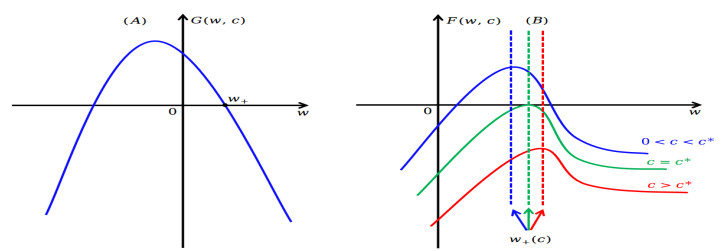
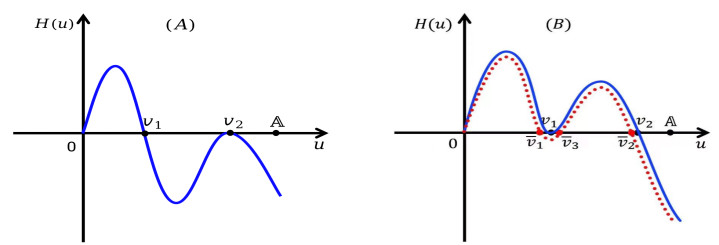
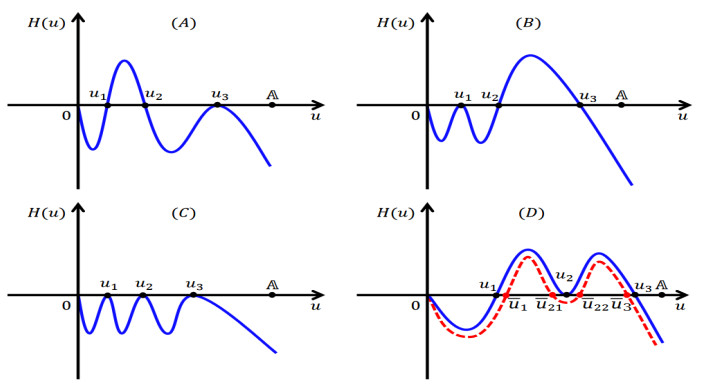
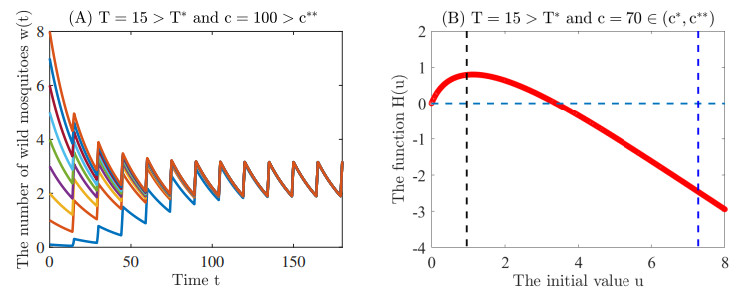
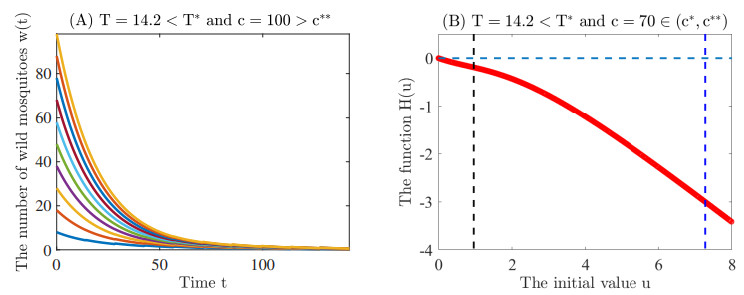


 DownLoad:
DownLoad: